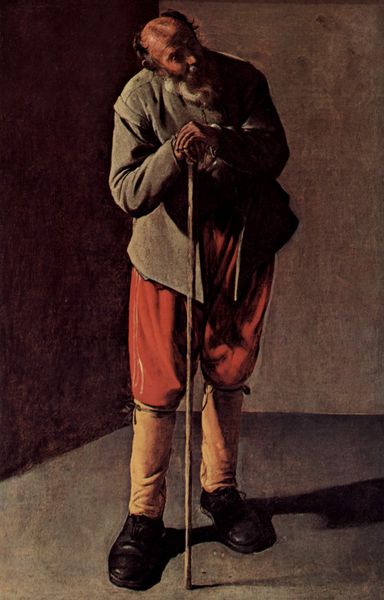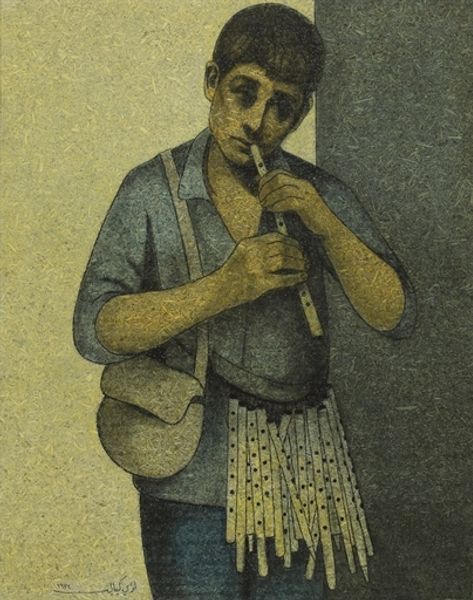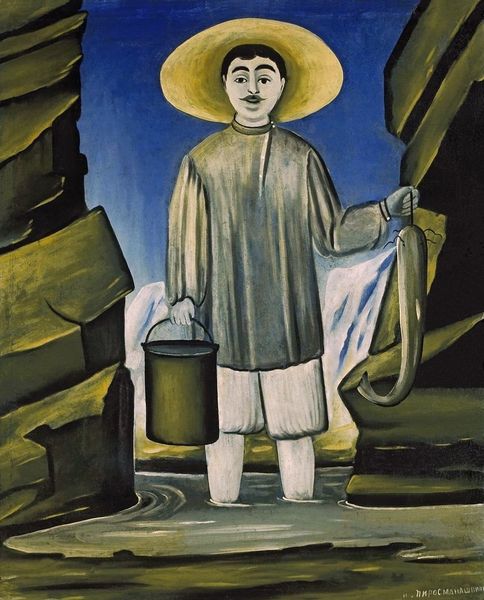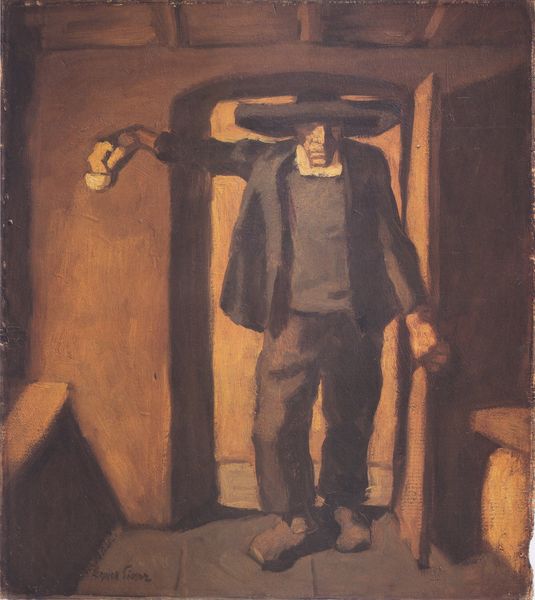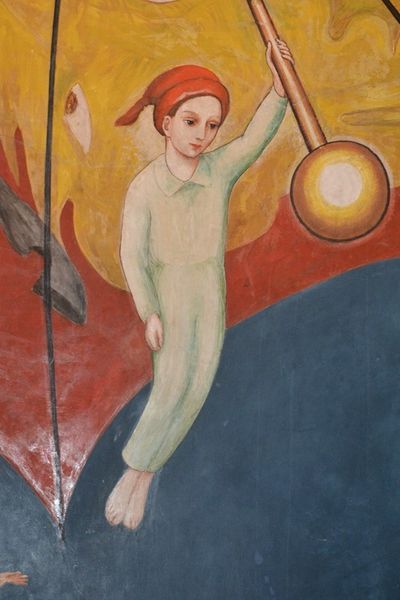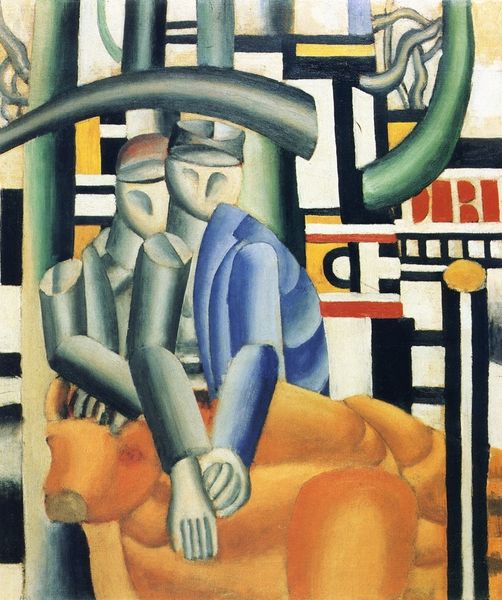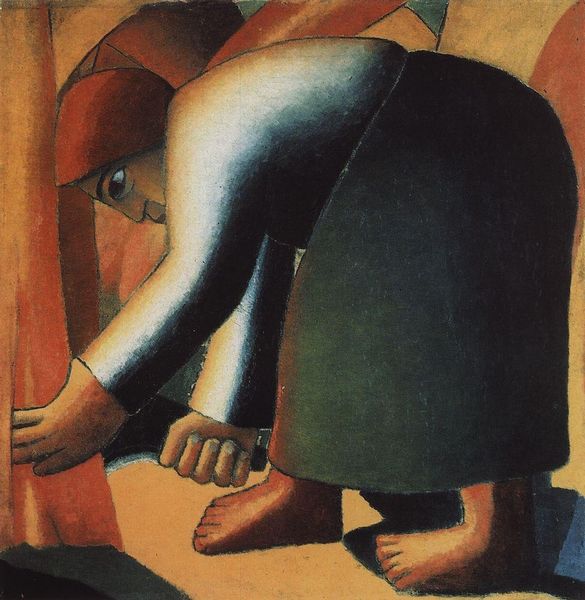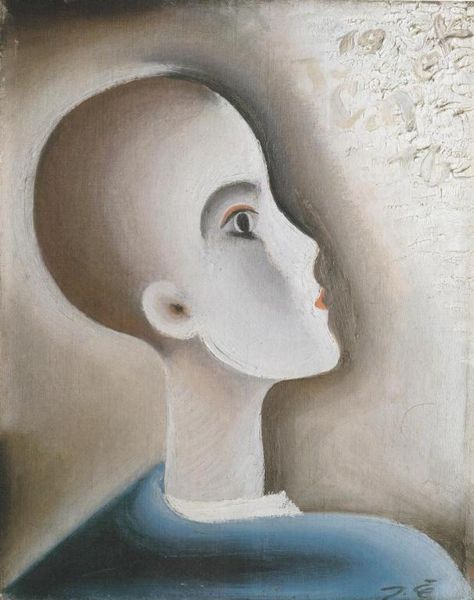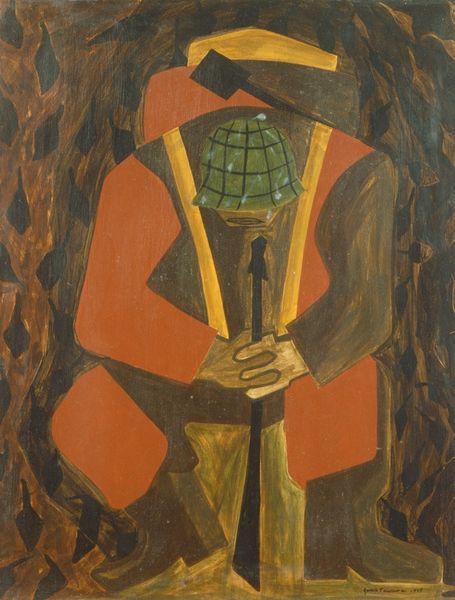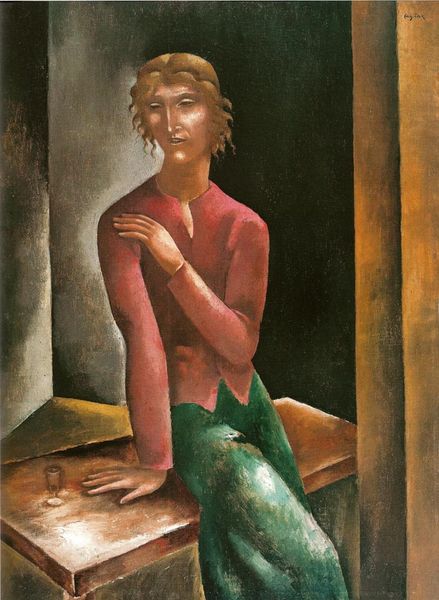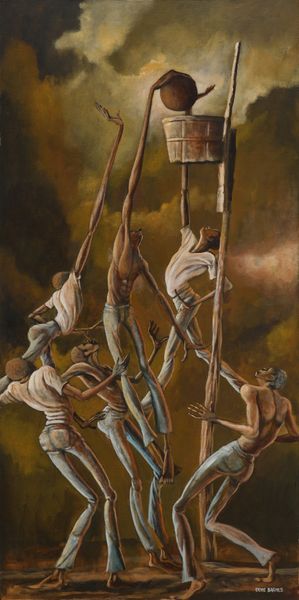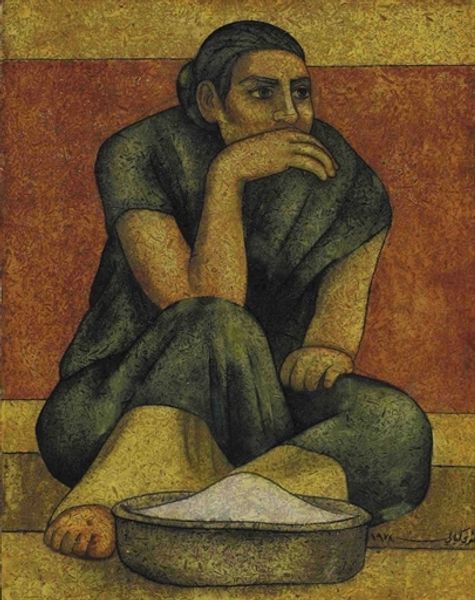
painting, oil-paint
#
portrait
#
metaphysical-art
#
painting
#
oil-paint
#
oil painting
#
portrait reference
#
facial portrait
#
portrait art
#
modernism
#
fine art portrait
Copyright: Public domain US
Editor: This is "Il Figlio del Costruttore," or "The Builder's Son," by Carlo Carrà, painted in 1921 using oil paint. It strikes me as very still and strange; the boy looks almost like a mannequin. What do you see in this piece? Curator: Beyond the formal elements of Metaphysical art – the unsettling stillness and symbolic objects – I see a commentary on the constraints placed upon young boys during that era. Think about post-World War I Italy, rife with traditional expectations and nationalistic fervor. This boy, dressed in what resembles a sailor suit, isn't freely playing; he's posed, almost imprisoned within the architectural space. The open doorway taunts us. Is it an escape, or merely another part of the construction? Editor: That’s interesting. I hadn't considered the social context, just the surface strangeness. So, you’re saying the “builder’s son” is symbolic of a generation being molded? Curator: Precisely! Carrà is challenging us to question whose vision is being imposed on these young lives. The title itself implies inheritance, a pre-determined path. And, look closer: even his toys – the ball and racket – seem like props in this preordained performance, highlighting the restrictions and pressures they faced. It becomes a very poignant critique of power and societal expectations. Editor: Wow, I'm going to think about portraits very differently now. It’s fascinating to see how the historical background informs the painting. Curator: Indeed, this painting prompts questions about how cultural expectations are imposed and resisted through art, encouraging deeper understanding of the artist’s intentions in a complex socio-political setting.
Comments
No comments
Be the first to comment and join the conversation on the ultimate creative platform.
